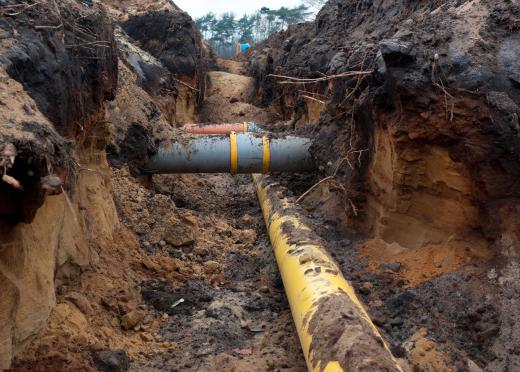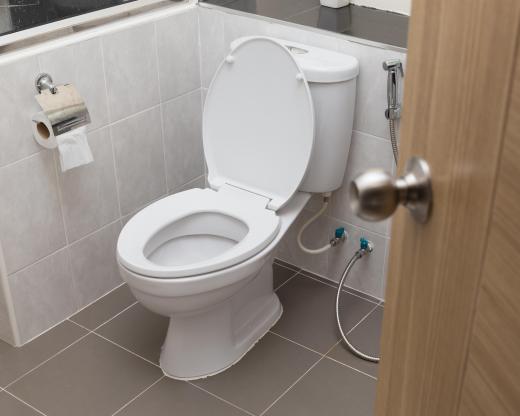Vacuum toilets are toilets which employ a vacuum for flushing, rather than gravity alone. There are a number of different types of vacuum toilets, ranging from toilets connected to vacuum sewer systems to toilets with a vacuum assist, which creates pressure to help flush the contents of a toilet with minimal water usage. Anyone who has flown on a plane is probably familiar with the vacuum toilet, and these toilets also appear on boats and in personal homes.
The way in which a vacuum toilet works is pretty simple. The toilet is hooked into a vacuum sewer system, which may consist of a single sewage tank or a series of sewer lines. When someone uses the toilet and flushes it, the flushing action opens a valve in the toilet, and the vacuum sucks the contents of the toilet out for treatment.

Because the vacuum involved is extremely powerful, a vacuum toilet requires little to no water. Some use sanitizing liquids instead of water to keep the toilet relatively clean. Vacuum toilets are often very low-odor, and they are much more efficient with water that regular toilets, as you might imagine. For this reason, some people like to install vacuum toilets in their homes, to increase their water efficiency.

Incidentally, according to the urban legends researchers at the Straight Dope, it is not advisable to flush vacuum toilets while sitting on the seat. Although injuries are rare, there is a potential for organ prolapse and severe damage to the intestines caused by the power of the vacuum literally sucking part of the intestines out. This risk is increased for people with more ample bottoms. Fortunately, such instances are extremely unusual, but in the opinion of this wiseGEEK writer, it is better to be safe than sorry.

A related concept is the pressure toilet, which pressurizes water for flushing, thereby also greatly reducing the amount of water needed to flush the toilet. Pressure assist toilets can be hooked up to regular sewer systems, and they are often used in homes and businesses. Numerous companies make pressure assist modules which can be installed in conventional toilets to increase their efficiency.
Ever since she began contributing to the site several years ago, Mary has embraced the exciting challenge of being a About Mechanics researcher and writer. Mary has a liberal arts degree from Goddard College and spends her free time reading, cooking, and exploring the great outdoors.

